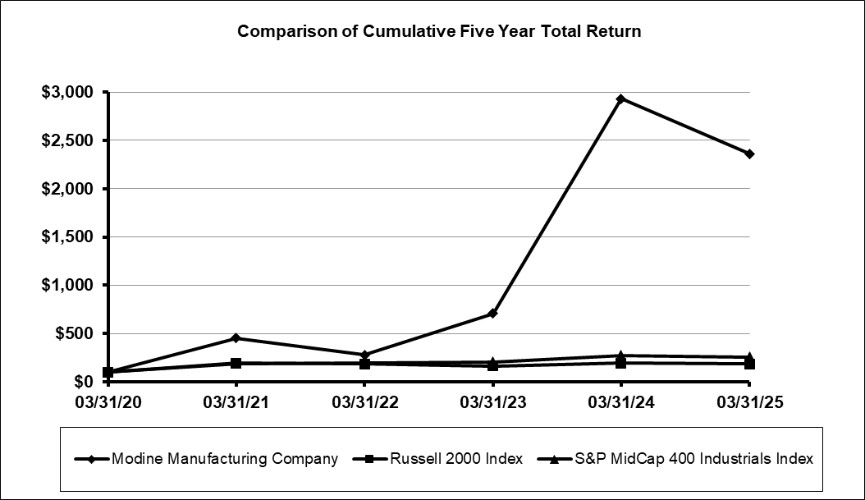Performance Technologies SG&A expenses decreased $4 million, or 4 percent, compared with the prior year. As a percentage of sales, SG&A expenses increased by 80 basis points. The decrease in SG&A expenses was primarily due to lower compensation-related expenses, which decreased $1 million, a $1 million favorable impact of foreign currency exchange rates, and decreases across other general and administrative expenses.
Restructuring expenses during fiscal 2025 totaled $20 million, an increase of $8 million compared with the prior year, primarily due to higher severance expenses in North America and product line transfer costs.
Operating income in fiscal 2025 decreased $4 million to $108 million, primarily due to higher restructuring expenses, partially offset by lower SG&A expenses.
Year ended March 31, 2024 compared with year ended March 31, 2023
Performance Technologies net sales increased $53 million, or 4 percent, in fiscal 2024 compared with the prior year, primarily due to higher average selling prices and a $14 million favorable impact of foreign currency exchange rates. These increases were partially offset by lower sales volume, including $25 million of lower sales from the three Germany automotive businesses that we sold on October 31, 2023. Sales of advanced solutions, air-cooled and liquid-cooled products increased $28 million, $23 million, and $8 million, respectively.
Performance Technologies cost of sales decreased $26 million, or 2 percent, in fiscal 2024, primarily due to lower raw material prices, which decreased $31 million, and lower sales volume. These decreases were partially offset by higher labor and inflationary costs and a $12 million unfavorable impact of foreign currency exchange rates. As a percentage of sales, cost of sales decreased 560 basis points to 82.6 percent, primarily due to the favorable impact of higher sales and lower material costs, partially offset by higher labor and inflationary costs.
As a result of the higher sales and lower cost of sales as a percentage of sales, gross profit increased $81 million and gross margin improved 560 basis points to 17.4 percent.
Performance Technologies SG&A expenses increased $17 million, or 19 percent, compared with the prior year. As a percentage of sales, SG&A expenses increased by 100 basis points. The increase in SG&A expenses was primarily due to higher compensation-related expenses, which increased $10 million, and increases across other general and administrative expenses.
Restructuring expenses during fiscal 2024 totaled $12 million, an increase of $9 million compared with the prior year, primarily due to higher severance-related expenses associated with the closure of a technical service center in Europe.
Operating income in fiscal 2024 increased $54 million to $112 million, primarily due to higher gross profit, partially offset by higher SG&A and restructuring expenses.
Liquidity and Capital Resources
Our primary sources of liquidity are cash flow from operating activities, our cash and cash equivalents as of March 31, 2025 of $72 million, and an available borrowing capacity of $239 million under our revolving credit facility. Given our extensive international operations, approximately $59 million of our cash and cash equivalents are held by our non-U.S. subsidiaries. Amounts held by non-U.S. subsidiaries are available for general corporate use; however, these funds may be subject to foreign withholding taxes if repatriated. We believe our sources of liquidity will provide sufficient cash flow to adequately cover our funding needs on both a short-term and long-term basis.
Our primary contractual obligations include debt and related interest payments, lease obligations, pension obligations, and obligations for capital expenditures. Our global pension liabilities totaled $30 million as of March 31, 2025. In June 2024, we approved the termination of our primary U.S. pension plan. In connection with the pending termination, we expect to make cash contributions in the range of $15 million to $20 million during fiscal 2026 to fully fund the plan on a plan termination basis. See Note 18 of the Notes to Consolidated Financial Statements for further information.
